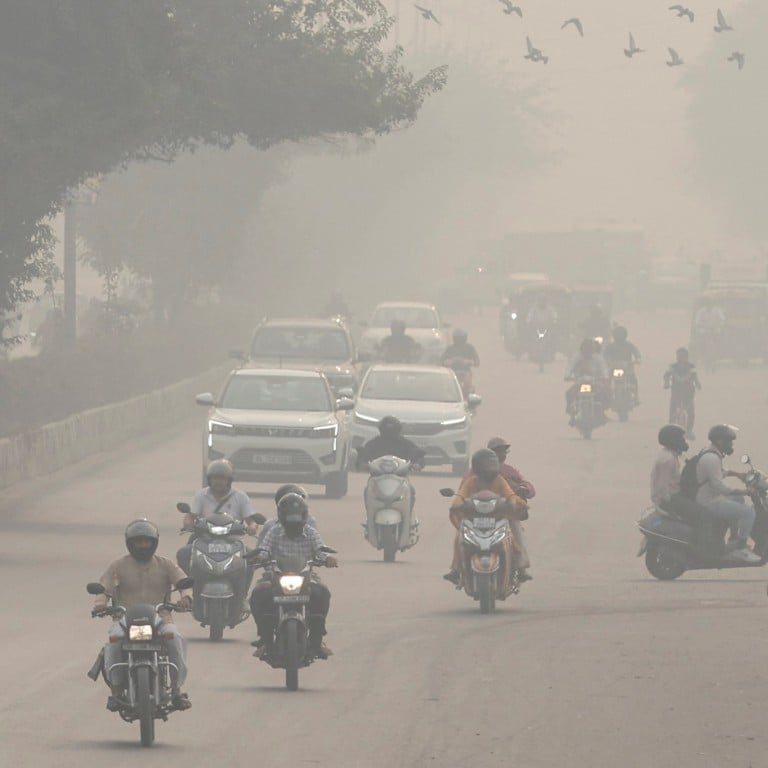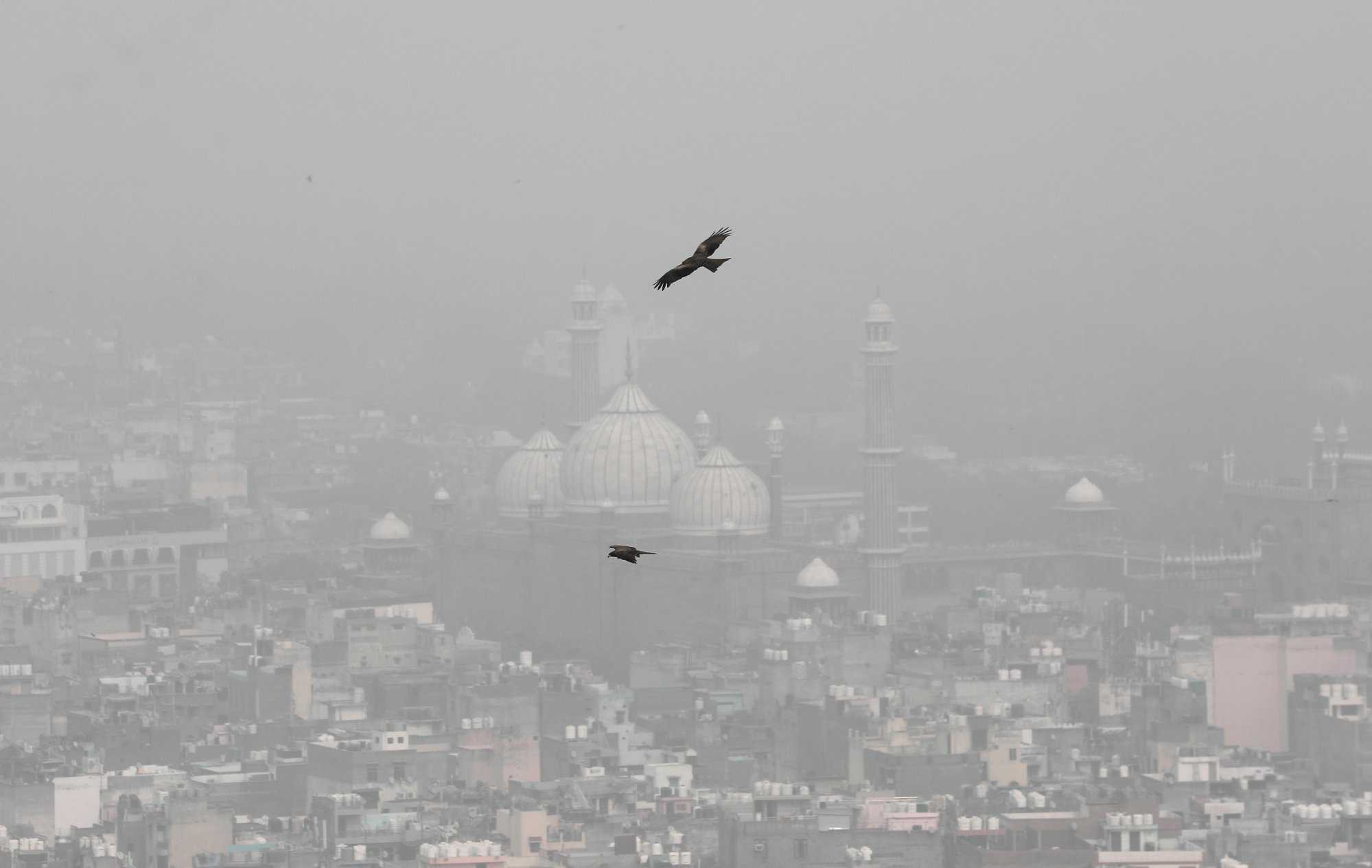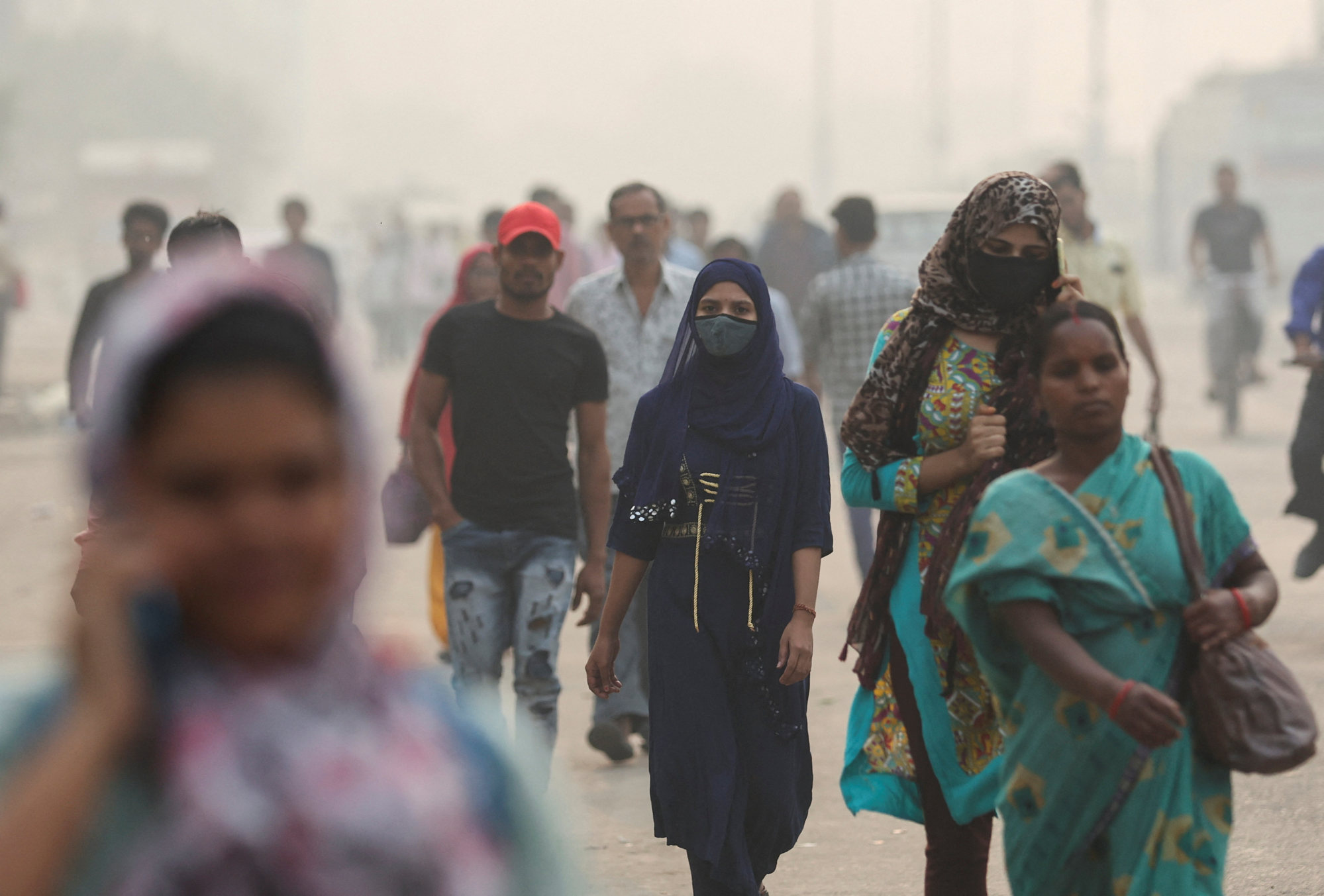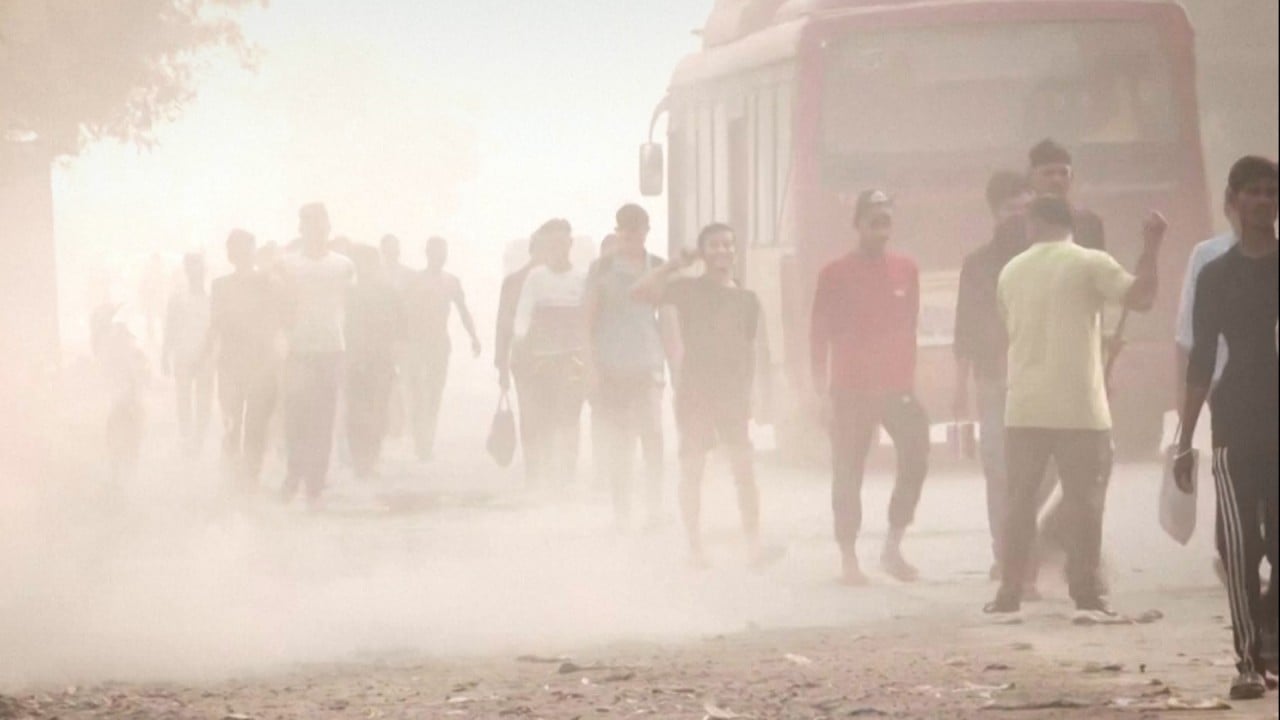
India’s New Delhi choked by toxic smog again, as fears of respiratory health disaster grow
- Officials are taking measures to deal with the public health crisis, such as imposing ‘odd-vehicle’ limits and suspending work on construction sites
- Some residents have banded together to push for cleaner air, but are dismayed the New Delhi authorities have failed to find a lasting solution
In what has become a miserable winter ritual in the Indian capital of New Delhi, primary schools are shut, people with breathing difficulties are flocking to hospitals and those who can afford it are fleeing the pollution-hit city, where air quality levels have soared to hazardous levels since last week.
The Air Quality Index, which measures the level of fine particulate matter in the air, has for the past several days rated the city over the 450 mark – nearly 10 times the acceptable limit – as farmers in surrounding states burn crops to prepare for the next planting season.
Officials are tackling the public health emergency by restricting trucks from entering the city and banning diesel cars. They have also suspended work on all construction sites, while half of government workers have been told to work from home.
From next Monday, the number of cars will be restricted as part of an “odd-even” scheme, whereby cars with odd number licence plates will be allowed on the roads on odd dates and even-numbered plates will be allowed on even-numbered dates.

Every winter, the lack of rain, low wind speeds and crop burning across two states close to the capital – Punjab and Haryana – by farmers preparing the soil for the next harvest, conspire to create a firestorm.
Residents wake up every morning to newspapers quoting doctors urging them to avoid early-morning and late-evening walks, when the air is the most toxic.
Doctors say senior citizens, children under the age of five, and those with respiratory illnesses and pregnant women are most at risk.
‘Hazardous’ air pollution in India’s New Delhi forces schools to close
Architect Nina Kapoor, 32, who is eight months’ pregnant, says she is not taking any chances to protect her six-year-old son and her unborn child. “I have put packing tape on all the windows to seal the rooms. I don’t let my son play out at all. The school closure is a disaster after the time lost during Covid. As for my baby, how will its tiny lungs cope with such toxic air?”
A tired joke is how smokers need not waste any money buying cigarettes. All they have to do is step outside because inhaling the air is the equivalent of smoking 30 cigarettes a day, according to pulmonologists.
Gynaecologist Dr Anita Nayyar feels at a loss when seeing her patients. “Some of my patients are wondering if they should leave the city [as] it’s really bad. They ask me how they can protect their babies and all I can say is buy air purifiers and seal the windows of the nursery,” she said.

In Delhi, residents understand that the causes of the pollution are complex. In addition to the crop burning, they include construction dust, vehicular emissions, thermal power stations not abiding by the emission rules, and the burning of urban waste.
But they are dismayed that the Delhi government has failed to find a lasting solution. “I used to love winters,” said retired teacher Arvind Gill.
“It was the best time of the year when the sun was gentle and you could sit outdoors, but now everyone is cooped up indoors,” he said. “And that, mind you, is the rich. The poor have no choice but to be out every day earning a living.”
In 2020, a group called Warrior Moms was formed to create a nationwide network of mothers pushing for clean air.
Founder Bhavreen Kandari was galvanised into forming it during the 2020 coronavirus lockdown, when she suddenly saw what she had not seen for almost 10 years: clear blue skies, clean air and starry nights.
“In our excitement, my friends and I shared photos of the blue skies on social media. We decided to act because it is heartbreaking for a parent to know their child’s life will be cut short because our leaders were not able to give them the basic human right to clean air,” Kandhari said.
But Warrior Moms are struggling to have an impact, as the latest pollution levels show. On Tuesday, livid at yet again another winter of thick smog, the Supreme Court said the situation would lead to the “complete murder of our young people”. It told Delhi’s government to take action and ordered the neighbouring states to halt the raging farm fires that were sending vast plumes of smoke towards the capital.
“We don’t know how you do it, it’s your job. But it must be stopped. Something has to be done immediately,” the judges said.

Given that Diwali, the Hindu festival of lights when people traditionally light firecrackers, is approaching on Sunday, the judges reminded the public about the court’s ban on firecrackers as setting them off would be “selfish” and worsen the pollution.
Habits die hard, though. A poll on Tuesday by a local polling company called Localcircles found that one-third of families planned to set off crackers.
Gill was stunned at the findings. “This has to be the definition of insanity when you ‘celebrate’ a happy occasion by bringing on disease, misery and death.”


